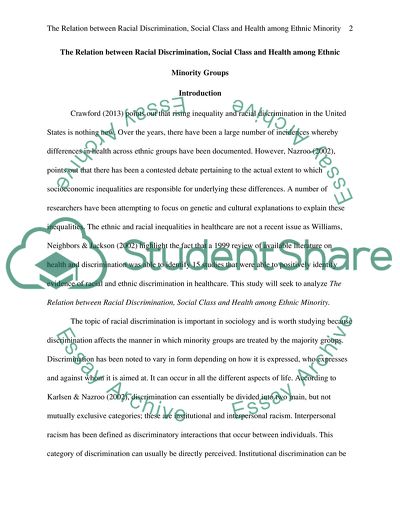Cite this document
(The Relation between Racial Discrimination, Social Class and Health Coursework Example | Topics and Well Written Essays - 2500 words, n.d.)
The Relation between Racial Discrimination, Social Class and Health Coursework Example | Topics and Well Written Essays - 2500 words. https://studentshare.org/sociology/1841860-the-relation-between-racial-discrimination-social-class-and-health-among-ethnic-minority-groups
The Relation between Racial Discrimination, Social Class and Health Coursework Example | Topics and Well Written Essays - 2500 words. https://studentshare.org/sociology/1841860-the-relation-between-racial-discrimination-social-class-and-health-among-ethnic-minority-groups
(The Relation Between Racial Discrimination, Social Class and Health Coursework Example | Topics and Well Written Essays - 2500 Words)
The Relation Between Racial Discrimination, Social Class and Health Coursework Example | Topics and Well Written Essays - 2500 Words. https://studentshare.org/sociology/1841860-the-relation-between-racial-discrimination-social-class-and-health-among-ethnic-minority-groups.
The Relation Between Racial Discrimination, Social Class and Health Coursework Example | Topics and Well Written Essays - 2500 Words. https://studentshare.org/sociology/1841860-the-relation-between-racial-discrimination-social-class-and-health-among-ethnic-minority-groups.
“The Relation Between Racial Discrimination, Social Class and Health Coursework Example | Topics and Well Written Essays - 2500 Words”. https://studentshare.org/sociology/1841860-the-relation-between-racial-discrimination-social-class-and-health-among-ethnic-minority-groups.


